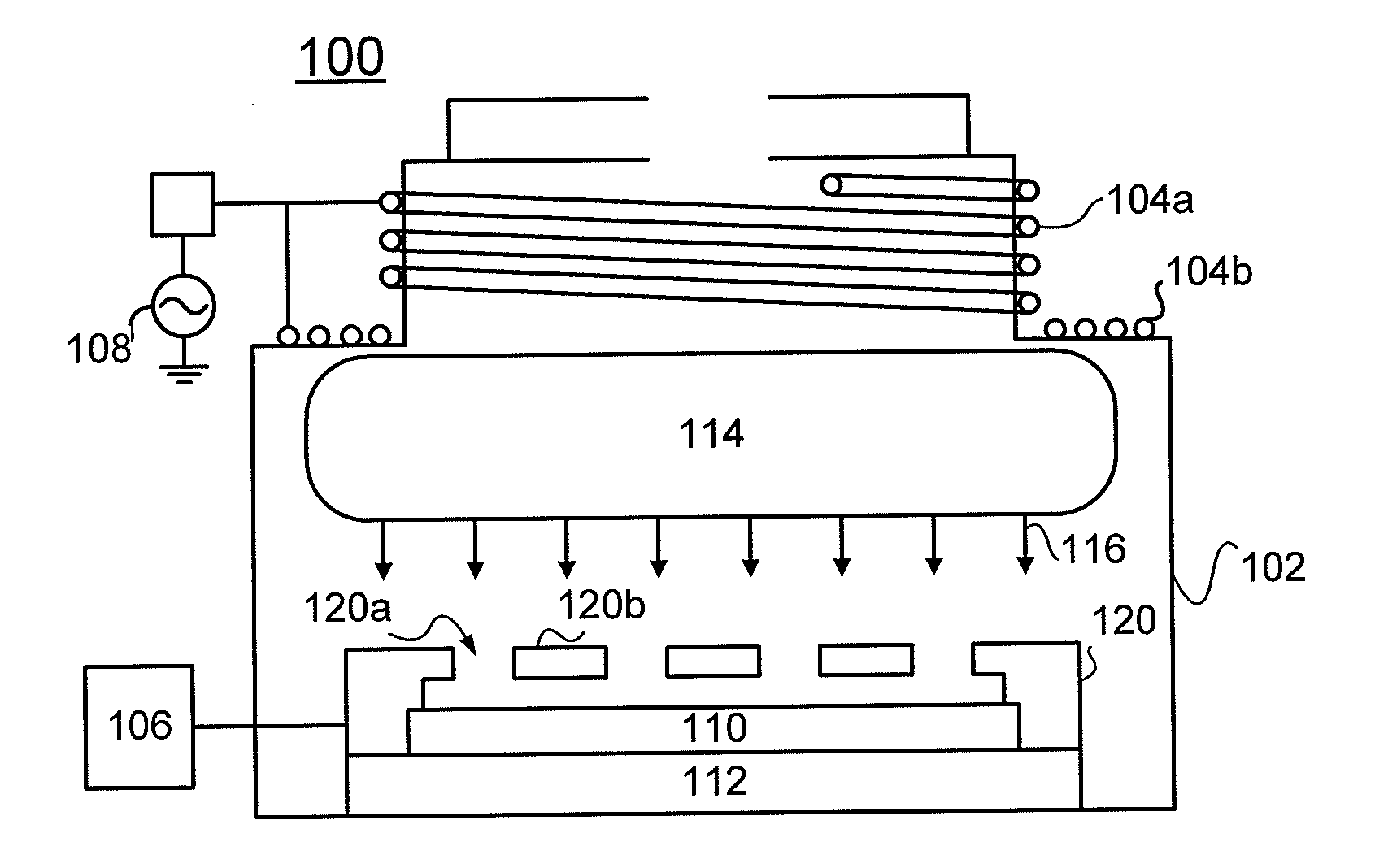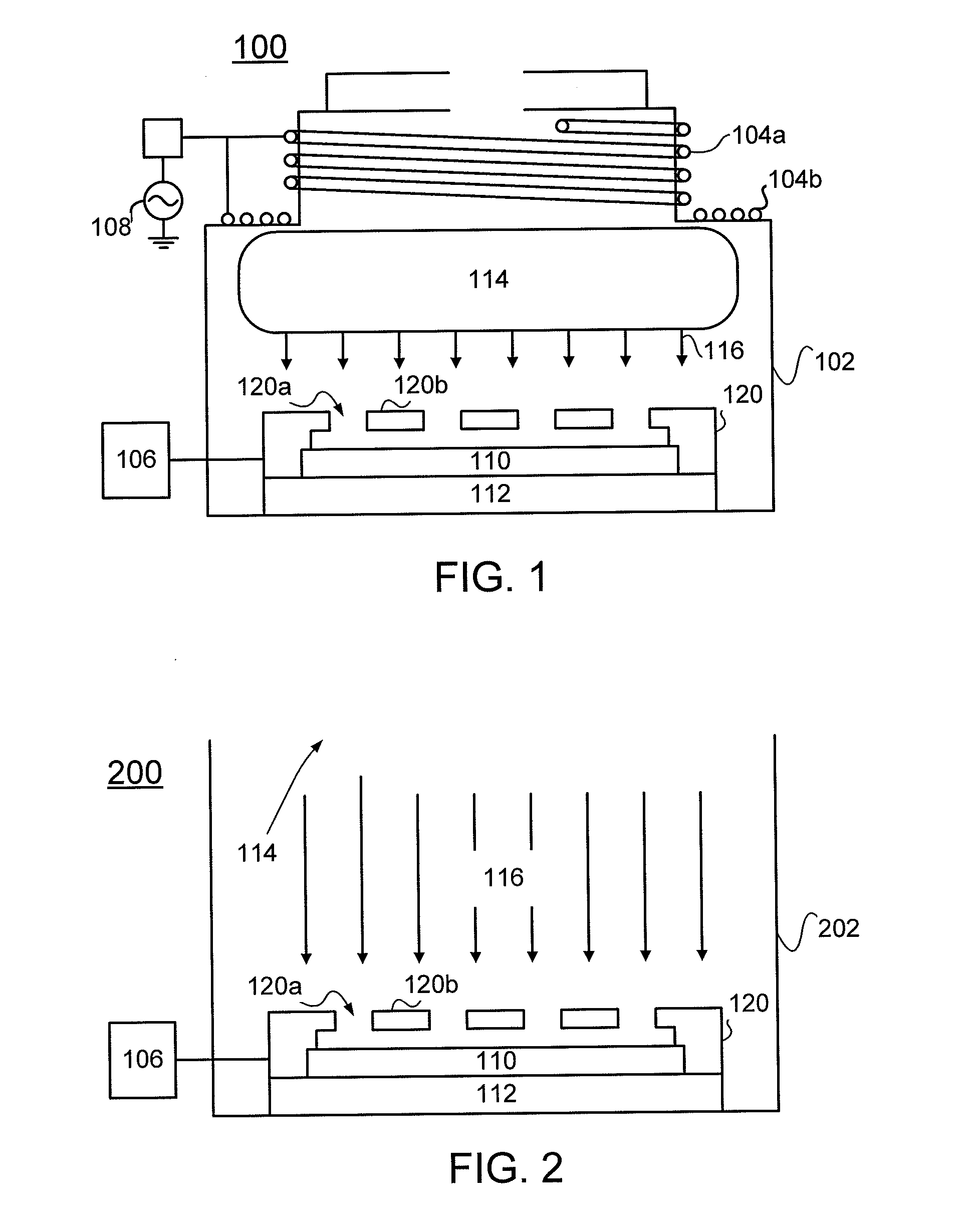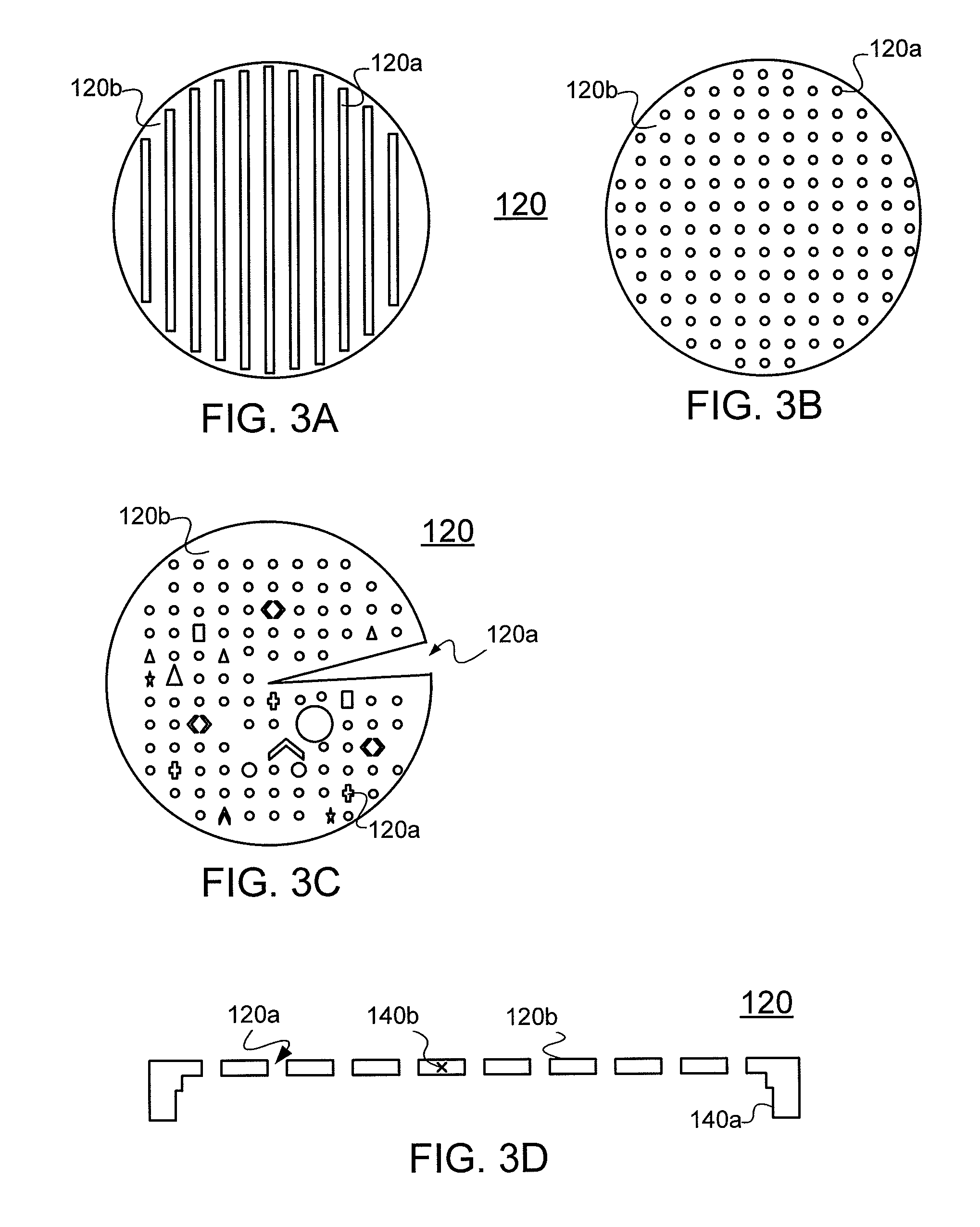Patterned assembly for manufacturing a solar cell and a method thereof
a solar cell and assembly technology, applied in the field of solar cell system manufacturing, can solve the problems of affecting the doping process, and releasing contaminants from the excess hea
- Summary
- Abstract
- Description
- Claims
- Application Information
AI Technical Summary
Benefits of technology
Problems solved by technology
Method used
Image
Examples
Embodiment Construction
[0028]Herein, several embodiments of patterned assembly for manufacturing a solar cell and a method thereof will be disclosed with reference to accompanying drawings. The detailed disclosure contained herein is intended for illustration, for better understanding the disclosure, and not a limitation thereto. Present disclosure may be made with reference to a particular solar cell manufacturing system. For example, the disclosure may be made with reference to a plasma doping (“PLAD”) or a plasma immersion ion implantation (“PIII”) system, or a beam-line ion implantation system. However, the present disclosure is equally applicable to other solar cell manufacturing systems including other types of plasma based or non-plasma based doping systems, plasma based or non-plasma based etching systems, plasma based or non-plasma based deposition systems, and the sprayed wet chemistry systems.
[0029]In addition, specific reference to a particular system does not mean that the system is limited t...
PUM
 Login to View More
Login to View More Abstract
Description
Claims
Application Information
 Login to View More
Login to View More - R&D
- Intellectual Property
- Life Sciences
- Materials
- Tech Scout
- Unparalleled Data Quality
- Higher Quality Content
- 60% Fewer Hallucinations
Browse by: Latest US Patents, China's latest patents, Technical Efficacy Thesaurus, Application Domain, Technology Topic, Popular Technical Reports.
© 2025 PatSnap. All rights reserved.Legal|Privacy policy|Modern Slavery Act Transparency Statement|Sitemap|About US| Contact US: help@patsnap.com



